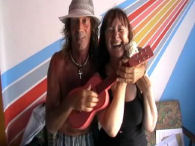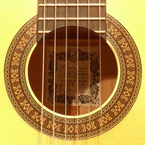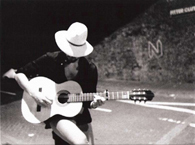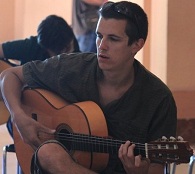Welcome to one of the most active flamenco sites on the Internet. Guests can read most posts but if you want to participate click here to register.
This site is dedicated to the memory of Paco de Lucía, Ron Mitchell, Guy Williams, Linda Elvira, Philip John Lee, Craig Eros, Ben Woods, David Serva and Tom Blackshear who went ahead of us.
We receive 12,200 visitors a month from 200 countries and 1.7 million page impressions a year. To advertise on this site please contact us.
|

|
|
For those struggling with pima arpeggios
|
You are logged in as Guest
|
|
Users viewing this topic: none
|
|
Login  | |
|

   
Kubase
Posts: 72
Joined: May 20 2009

|
 For those struggling with pima arpeggios For those struggling with pima arpeggios
|
|
|
Like many others, my pima and pimami arpeggios have been letting me down for some time, lagging behind the other tchniques by quite a margin. It's very irritating, as pami comes very naturally to me and I could play it loud and fast almost immediately. I have done a lot of reading up about planting, sequential planting, wave movements, individual movements, relaxation etc. and have finally hit on a learning method that, for me at least, is working wonders.
I'm not claming to have invented this (although I've not read about it anywhere) but will share it here in the hope it can help others accomplish a fast, loud and even pima and pimami arepggio. I'll list the two well known practice methods that lead me to my "revelation" first.
By the way, I practice with the top four notes of an open E chord - playing the D string with the thumb is harder than the E and A strings in my opinion, as there is less space between the fingers and so positional accuracy, and therefore learning speed, is hopefully increased:
------------0----------------0-------------------------0----------------0------------
---------0----------------0-------------------------0----0-----------0----0---------
-----1----------------1--------------------------1----------1-----1----------1------
-2--------------- 2---------------etc.-------2-----------------2-----------------etc.
1) Planting.
This is the first technique I learned. The p, i, m and a are placed on the strings (like when playing a block chord) before any notes are played, and sort of rolled off in sequence. A very fast apreggio can be achieved quickly with this technique, however as the notes aren't allowed to ring for the full duration - they are cut off after a is played - it has it's own sound which can work sometimes but not, in my opinion at least, all the time. However, it is a useful method for training the postioning of the fingers.
2) Sequential Planting.
With this method, each finger is placed on the corresponding string momentarily before it is played. So, p rests on the D string, then plays it, then i rests on the G string, then plays it, and so on. I found this tehnique very useful, as it trained the right hand without compromising the sound of the arpeggio.
3) Rolling Planting (can't think of a better name  ) )
This is the method I came up with. It feels awkward as hell to start off with but in my case it worked extremely well. I imagine it will be as hard to explain as it is to play, but here goes. The idea is that before anything is played the right hand is in position but not touching any strings. Then, at the same moment p plays, i rests on the G string. Then, when i plays, m rests on the B string. And so on. It can be broken down into two simultaneous movements, which is why I think it trains the hand so well. As one finger plays it's note, the next lands on it's string ready for the next note.
Anyway, give it a try if you struggle with pima!

|
|
|
|
REPORT THIS POST AS INAPPROPRIATE |
Date Jul. 26 2009 4:02:53
 |
|
 New Messages New Messages |
 No New Messages No New Messages |
 Hot Topic w/ New Messages Hot Topic w/ New Messages |
 Hot Topic w/o New Messages Hot Topic w/o New Messages |
 Locked w/ New Messages Locked w/ New Messages |
 Locked w/o New Messages Locked w/o New Messages |
|
 Post New Thread
Post New Thread
 Reply to Message
Reply to Message
 Post New Poll
Post New Poll
 Submit Vote
Submit Vote
 Delete My Own Post
Delete My Own Post
 Delete My Own Thread
Delete My Own Thread
 Rate Posts
Rate Posts
|
|
|
Forum Software powered by ASP Playground Advanced Edition 2.0.5
Copyright © 2000 - 2003 ASPPlayground.NET |
7.800293E-02 secs.
|


 Printable Version
Printable Version




 )
) 








 New Messages
New Messages No New Messages
No New Messages Hot Topic w/ New Messages
Hot Topic w/ New Messages Hot Topic w/o New Messages
Hot Topic w/o New Messages Locked w/ New Messages
Locked w/ New Messages Locked w/o New Messages
Locked w/o New Messages Post New Thread
Post New Thread